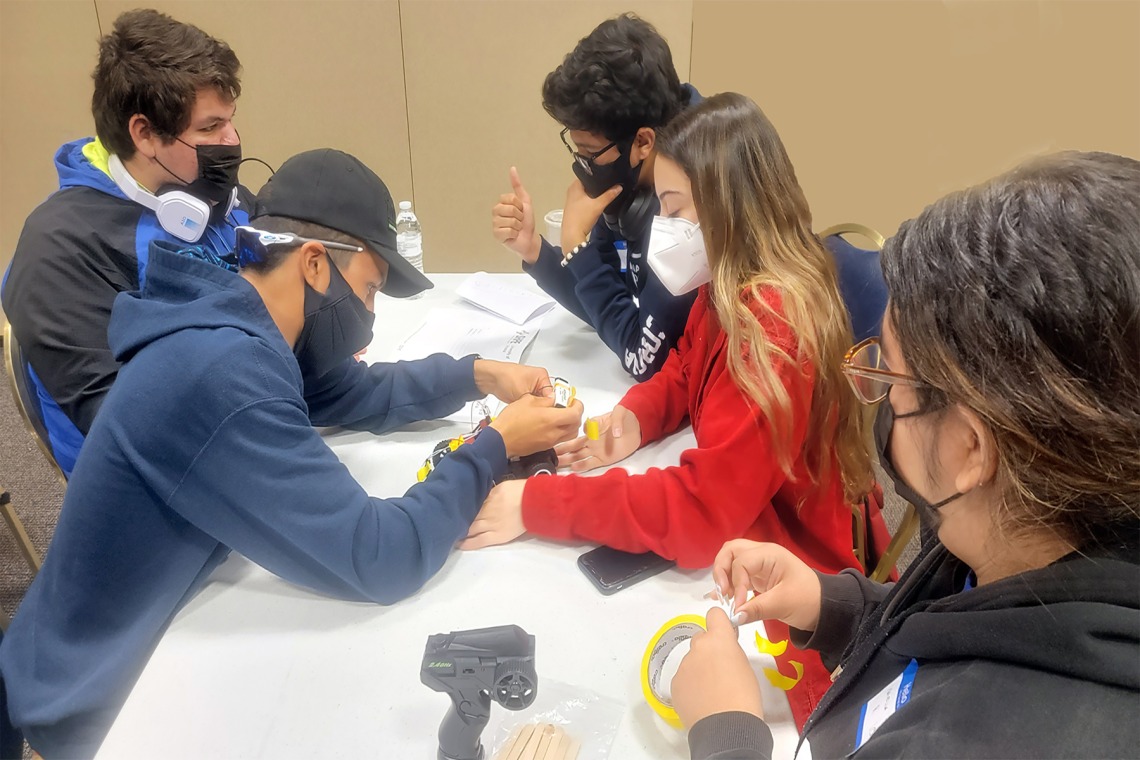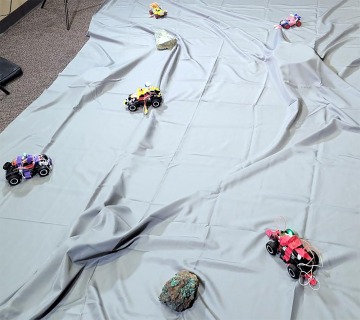High-school students practice space mining

Can we mine space for resources? How do we even find those resources in space? What would a mine look like on an asteroid? Those questions inspire the imaginations of today’s students. Our new asteroid mining engineering activity helps students discover the answers .
Providing the raw materials for a growing society is one of the grand engineering challenges for the 21st century. Asteroids and other objects in space are one possible source for these resources. But designing a mine in space has its own unique set of challenges. Developed in partnership with the University of Arizona’s Society of Hispanic Professional Engineers (SHPE) student chapter and Dr. Victor Tenorio from the Mining and Geological Engineering department, the asteroid mining activity guides students in the design of their own solutions to those challenges.
On March 3rd, 2022, the Lowell Institute for Mineral Resources partnered with the University of Arizona SHPE student chapter to bring this hands-on workshop to over 60 High School students from across Arizona during their annual "Advancement of Latinx in Engineering Day". The purpose of this event is to expose high school students to a university setting and inspire them to pursue a career in a STEM program. In addition, this year’s theme was “STEM in Space” and consisted of five workshops, each hosted by a different organization.
The mining activity starts with an overview of mining in space and the current state of efforts to explore near Earth asteroids. With this background, students move on to the first design phase of the project. Finding mineral resources on asteroids is not something that can be done in person, so students are tasked with designing and deploying a sensor package on an off-the-shelf rover. If the students complete their rover before the launch window closes, they can move on to the operating phase.

In the operating phase, the students’ rovers are “launched” onto an asteroid, where they now must pilot their rover around the surface of the asteroid while monitoring the optical data from their sensor package. Their view is limited to the video data streamed from a camera on an orbiting satellite, so they must deal with the limitations of one perspective and input lag on the movement commands they send to the rover. We simulate this situation using a camera viewing a simulated asteroid terrain in a nearby area separate from the students.
Once students find a deposit, they are given the details of their discovery and can move on to designing their mine facility. Without flowing water, wind, or protection from solar radiation, a mining facility on an asteroid will require quite a distinct set of design considerations than one on Earth. In the final design phase, students use the data about their deposit, their engineering knowledge, and their imaginations to design a mining facility. Students must combine the known requirements of the deposit and the material they are mining, and then brainstorm ways to overcome the unknown challenges of building a facility on an asteroid. Will the facility be completely underground? Solar-powered? How will we get the mined material back to Earth? These are the ultimate questions for the students since, as of yet, they have no established answer.
The workshop was quite a hit during the event, with many students saying that it was their favorite activity of the day! Moving forward, with this new hands-on design activity, students can connect the engineering design principles they learn today with the solutions to the problems of tomorrow.
Extra Info
High School Teachers in Arizona can book a presentation of this activity for their students by filling out our presentation request form.

